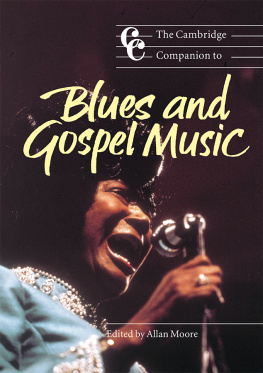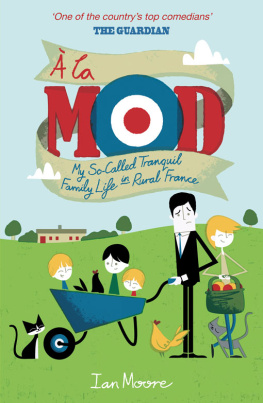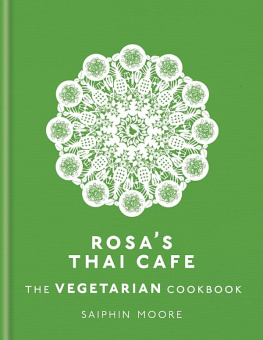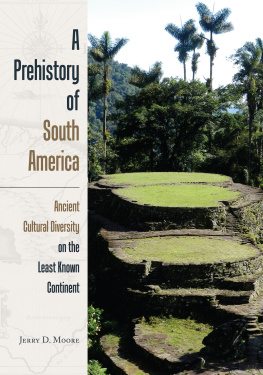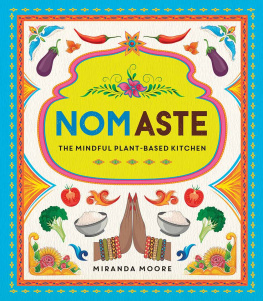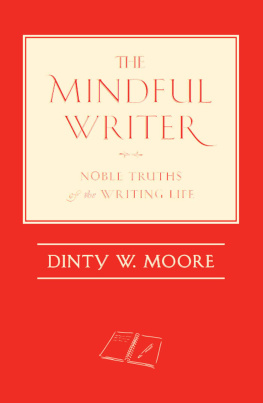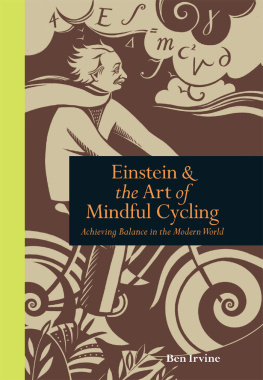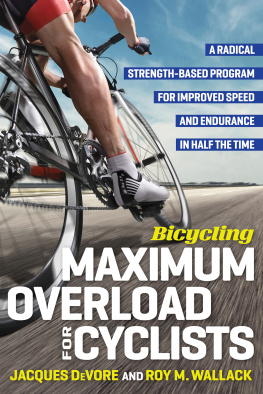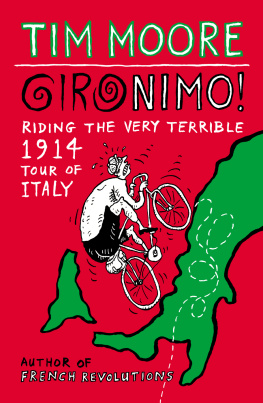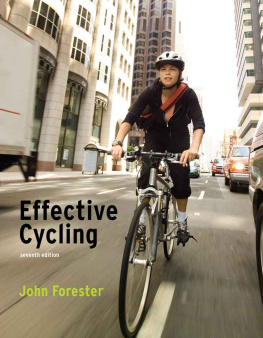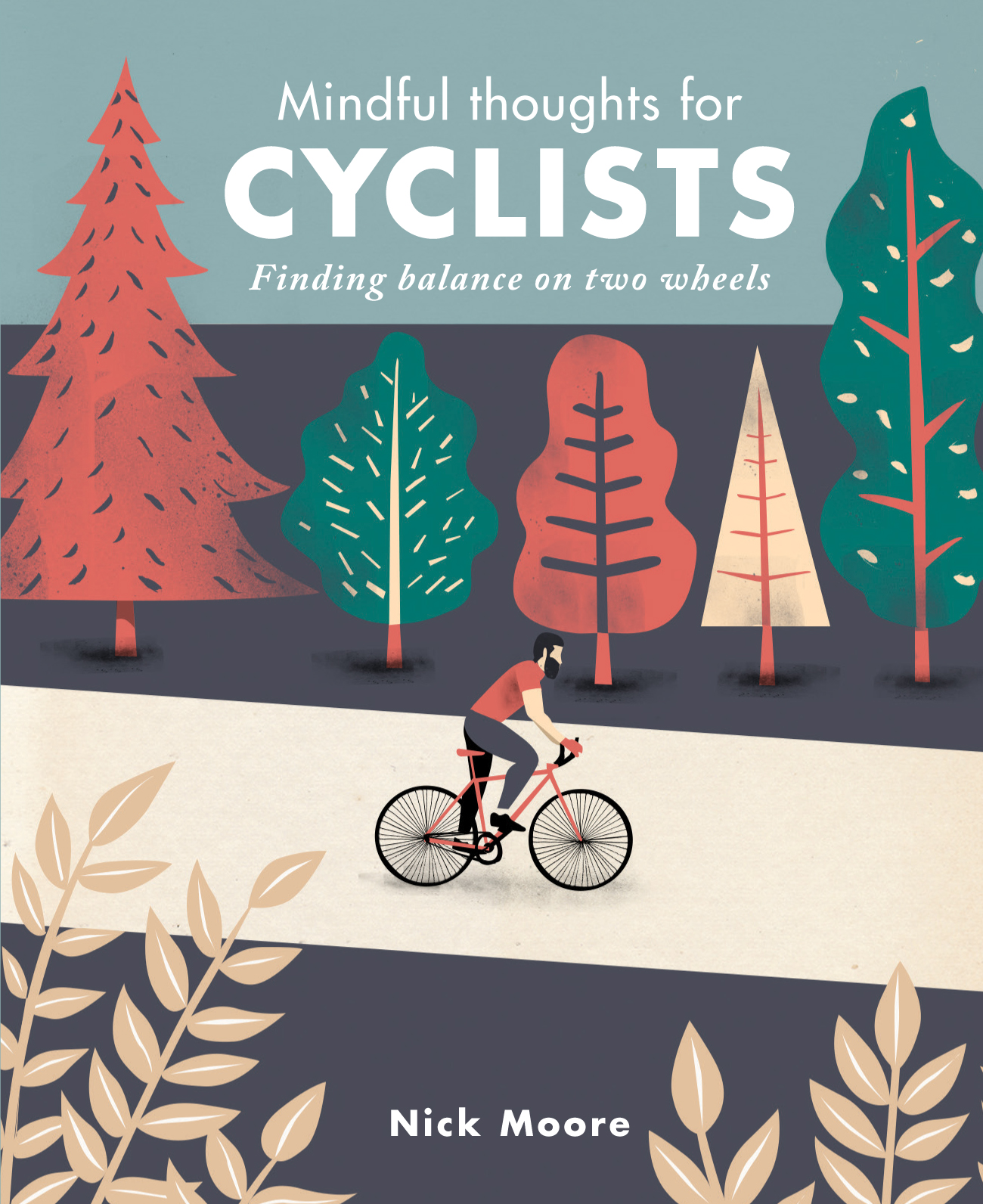Mindful thoughts for
CYCLISTS
Finding balance on two wheels
Nick Moore

INTRODUCTION
A Journey of
Discovery
A family friend, sadly no longer with us, once said: If you want to know about something, write a book about it.
Let me begin with a disclaimer. This is not a how-to guide, or in any way definitive on cycling or mindfulness. Nor is it a manifesto, polemic or call to arms. What it does offer, I hope, is an alternative to the slew of books that exhort us to do more, achieve more, be more. These are thoughts; reflections on finding a mindful balance in cycling and, perhaps, in life itself. They are very much like the rides that inspired them: short, circular, with no end other than pleasure in mind.

The last decade has seen a massive resurgence in cyclings popularity in Britain and the US (it never went away in Europe) and its a joy to see so many taking to the road for the first time, or coming back to bike-riding after what is often many years away. And in many respects, theres never been a better time to be a cyclist. The problem is that cycling, like almost everything else in life, is now highly commoditized and skilfully marketed. These thoughts are intended to help you maintain a sense of balance and proportion amid the endless temptations, illusions and distractions. As I hope they show, cycling is replete with richness, diversity, pleasure and wisdom if we are truly present, and focus on what is.
If youre new to cycling, I hope this book will help you cultivate a healthy, balanced relationship with your bike from the get-go. For more experienced riders, it may resonate with your own search for a new direction, or bring something extra to your regular routine. There will probably be things you disagree with, or find simply dont work for you, but my hope is that youll find something, somewhere, in these thoughts that enables you to develop a deeper awareness as youre riding, and be fully present in the moment. It could be learning to embrace the heat, the cold, the rain. Dealing with punctures or getting lost. Noticing and appreciating the natural world. Getting up hills. Or simply being conscious of how your body and bike are working together as a single, beautiful, biomechanical entity.
I spent my thirties as a fairly typical Middle-aged Man In Lycra (MAMIL), but was forced to rethink my approach when, aged 40, I developed osteoarthritis in my knees. Suddenly, I could no longer concentrate solely on going faster and getting the miles in. I had to think about every pedal stroke, be minutely aware of gradients, gearing, my position on the bike, the pressure on my knee. I had to be fully aware of everything, every moment, otherwise things started to hurt. I didnt go looking for mindfulness. It found me.
After 20 years Ive started to learn what cycling truly means to me. I dont know, and would never presume to guess, what it might mean to you. Thats for you, and your bicycle, to find out mindfully together. Enjoy the ride.
Wheels
within
Wheels
Cycling is a game played out in circles: some concentric, some interlinked like a Venn diagram. The first and smallest is described by something you cant actually see: the spindle in the bottom bracket to which the crank arms are attached. The frame is usually held to be the heart of the bicycle, but in some respects, this humble metal rod is a closer analogue. Year after year, mile after mile, it works out of sight and out of mind, calmly keeping the rest of the mechanism in motion. We dont pay it any attention until it gives us trouble, and when it does, everything comes to a halt. Sometimes, it can be fixed; sometimes, the only option is to replace it. And the day will surely come when it fails altogether.
Equally vital, and similarly unsung, are the hubs. A mechanic friend of mine once told me the surest test of a hub is to put the bike in a work-stand, spin the wheel with your hand, then go and make a cup of coffee. If the wheels still turning when you come back, its a keeper.
ON THE SUBJECT OF PEDALLING
The next circle is concentric to the bottom bracket: the rotation of the pedals. The key to riding efficiently, in addition to correct gear selection, is a smooth, fluid pedalling action spinning, or what the French call la souplesse. So important is this circle that a tired, out-of-form or just plain inept rider is said, equally vividly, to be pedalling squares.
Racers aim to maintain a pedalling speed, or cadence, of about 8090 revolutions per minute. Thats about 5,000 an hour; and a typical pro will put in four to five hours a day, 200 days a year. Call it five million pedal strokes a year, over a career that might last a decade or more. Even at the more modest cadences we mortals can manage, it can soon add up over a lifetime of riding. Hence the mindful cyclist is always listening to their hips, knees and ankles: any twinges in the hinges should never be ignored.
THE TURN OF THE WHEEL
Further out still, the rims and tyres are in orbit around the hubs, with the valve whizzing by like a little geostationary satellite. Laced together with their intricate tracery of spokes, they make up the whole wheel. Seamless and never-ending, containing everything and nothing, the wheel has long exerted a powerful hold on our psyche. In Buddhism, the dharmachakra has represented Gautama Buddhas teaching of the path to nirvana since ancient times. Interpretations vary, and fill whole books by themselves, but in essence, the wheels circular shape symbolizes the perfection of the Buddhas teachings. The rim represents meditative concentration and mindfulness its often shown with sharp spokes protruding beyond it, signifying penetrating insights while the hub at the centre stands for moral discipline.
In the Celtic tradition, and in modern-day paganism, the year is viewed as a wheel, revolving through the active and dormant states of nature, man and agriculture. The winter and summer solstices, and vernal and autumnal equinoxes, are marked by the solar festivals of Yule, Litha, Ostara and Mabon. Between them come the fire festivals of Imbolc, Beltane, Lughnasa and Samhain, marking significant farming events. These live on in our modern calendar as Candlemas, May Day, Lammas and All Hallows Eve, or Halloween.
THE BIG LOOP
On a road bike, every turn of the wheels takes you a about seven feet (a little over two metres); call it 750 revolutions per mile. Think how many hoops we bowl through the air, even when we just pop down to the shops. And each of these little circles described by the bicycle itself are encompassed within larger ones.
Because every ride is, ultimately, circular. Even the mightiest of them all, the Tour de France, is colloquially referred to simply as la grande boucle the big loop. To make these circles right through the year is to see, feel and connect with the slow roll of the seasons. Theres nothing wrong with confining your cycling to warm summer days, but for true understanding we must know cold, not just heat, and embrace the dark as well as the light.


